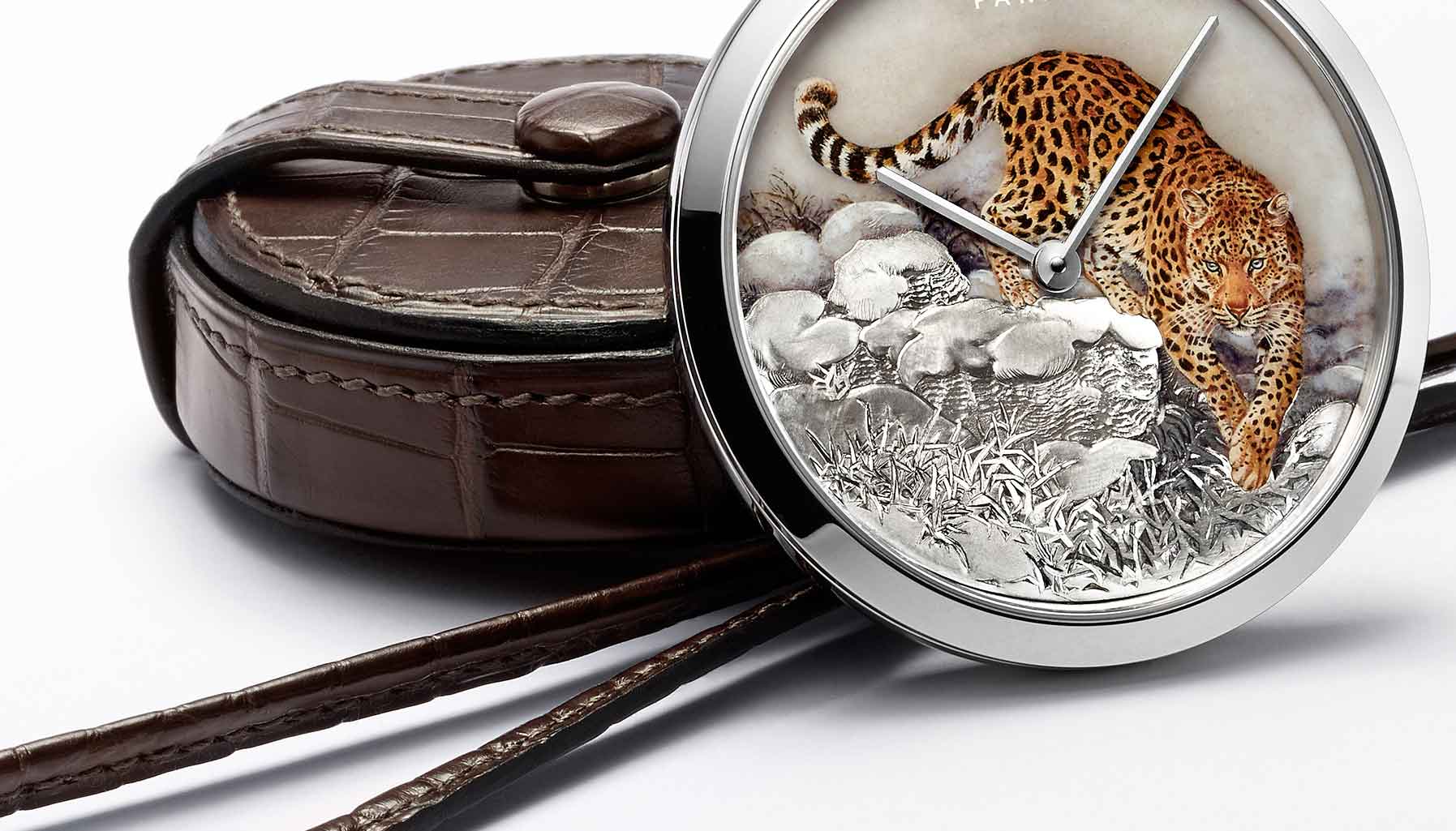The story of how Miki Eleta became a world-renowned clockmaker
Miki Eleta was a standout at Dubai Watch Week this year. Not only was he the sole clockmaker exhibiting at the fair, but also because his otherworldly kinetic sculptures stole the show. The whimsical, intricately complicated one-of-a-kind pieces are populated by Martians and miniature monsters that come to life in clockworks with openworked cogs and wheels and levers. All components are made by hand by Eleta for his eponymous company with timekeeping functions ranging from time and date to moon phase, perpetual calendar and astronomical displays.

A favourite in Dubai was the Minute Muncher (CHF 150,000 or approximately S$221,500), which represents the fleeting nature of time. “All cultures and religions in this world deal with the transience of life,” says Eleta. “It is present as Vanitas in the Christian tradition, as Anicca in Buddhism or as Mono no aware in Japan. The older and wiser we become, the more we appreciate every minute of time that is given to us.” Minutes are displayed through 60 small portholes on top of a drum-shaped carrousel, on top of which a kinetic monster with a long snout like an anteater rotates above them and gobbles up the numeral representing each minute as it passes. As he approaches and bends down to eat it, the numeral disappears under the drum. Poised above is the hour ring, carved in brass and plated in gold, and hovering at the top is a globular moon phase made of titanium, propped on a post like a lollipop. The Minute Muncher was also inspired by the time Miki Eleta forgot he and his wife’s 45th wedding anniversary. In order to help the owner of this clock escape a similarly embarrassing misstep, he incorporated a function that marks a specific date to remember. Each of the 600 components was made by hand.

Another piece takes its cues from ancient South American culture and translates it into space-age themes. Entitled BY12Dez21ME (CHF 240,000 or approximately S$353,300), is named in reference to a Mayan prediction that a god named Bolon Yokte would return to Earth from the heavens on 21 December 2012, at which point the planet and its inhabitants would undergo a spiritual transformation. The upper part of the piece, with open-worked clockworks, is shaped like a spaceship. The base is held together with 800 screws, all made and assembled by hand. It has landed on a disk where several small green aliens made of glass are busy investigating their new surroundings. One operates a metal detector, others are dancing and another peers over the edge of the disk to see if the Earth is flat. It is also a clever take on modern life rediscovering the ancient art of telling time through complicated clockwork.

Eleta’s work was also noticed at the Grand Prix d’Horlogerie de Genève (the Oscars of watchmaking) this year, in which his Svemir astronomical clock, was nominated in the Mechanical Exception category. It was voted as one of the 83 finalists (six finalists in its category) out of 226 entries and, according to at least one jury member, came very close to winning its category. Functions include hours, minutes, date, day, month, year, moon phases, power reserve, jumping hours, world time, perpetual calendar, equation of time, day/night indicator, zodiac, seasons, equinoxes, solstices and two astronomical models: geocentrism and heliocentrism.

The Yugoslavian-born clockmaker has lived in Switzerland since 1973, and has had a varied background. Educated as a social scientist, he worked as a taxi driver, musician and football coach before taking an interest in kinetic clockworks. As his passion progressed, he graduated from hobbyist to expert, and today he is engaged almost exclusively on private orders. His works include the fountain at the entrance of the Musée International de l’Horlogerie in La-Chaux-de-Fonds and a kinetic sculpture with music-playing harlequins above the entrance of the Museum CIMA (Centre International de la Mechanique d’Art) in Sainte-Croix, Switzerland. His pieces have also been displayed in the MB&F MAD Gallery in Geneva.

“For me, constructing a clock is a playful and fascinating experiment,” says Eleta. “In order to give the as yet undiscovered element a chance to come to life, I try to surprise myself without worrying about failure. Manufacturing a clock means feeling life and adventure.”
This story was first published on Robb Report USA






